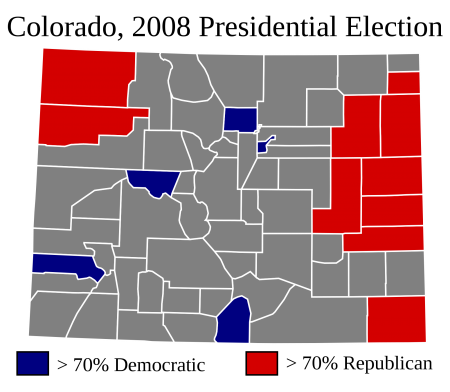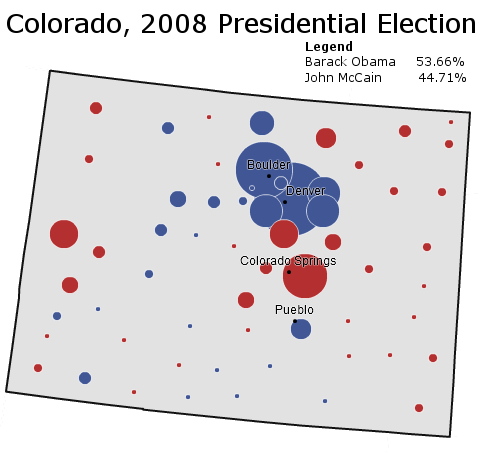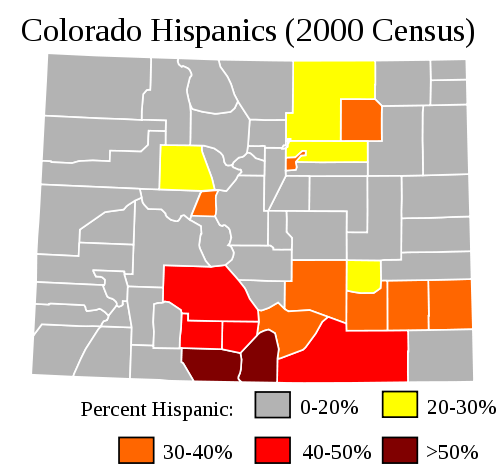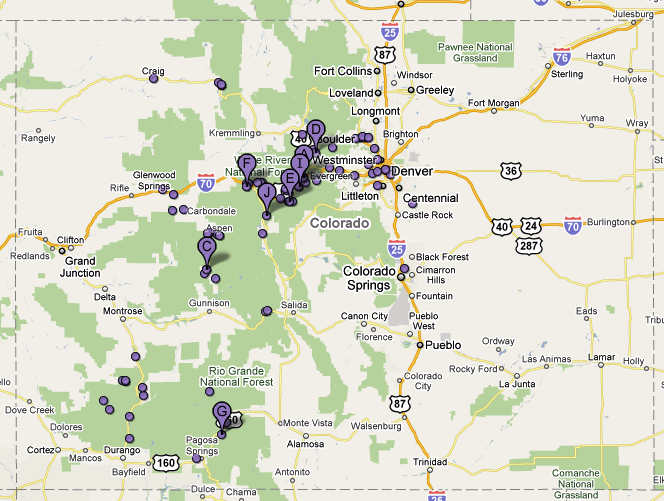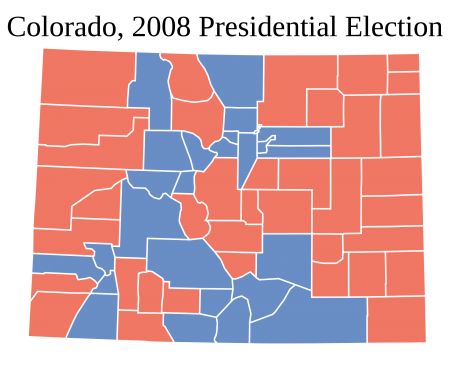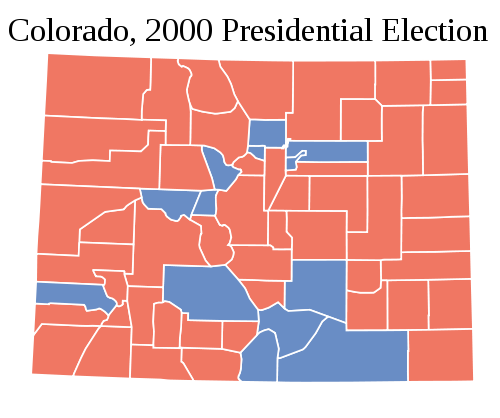I’ve finally decided to take the plunge into a series entries on the House, my take on them and beyond. I’m starting with the West Coast, California, Oregon, Washington, plus Hawaii.
Hawaii:
HA-01: I don’t know how the pundits are kidding themselves here, I really don’t. Polling is really underestimating Hannabusa, and people are somehow, (CQpolitics, I’m looking at you), ignoring the fact that the number of votes she received, practically unopposed, in the Democratic primary a month ago, amounted to 51% of the total votes cast in the 2006 GENERAL Election. The total number of votes cast for Democrats in that primary amounted to 62% of the total number of 2006 votes cast in the General. So basically, in justifying this as a toss up, these pundits are saying that the conservative Djou will win every Democratic primary voter that didn’t vote for Hannabusa, plus benefit from a massive spike in normal midterm turnout, that also heavily benefits him. Sorry, it just ain’t happening. Hannabusa is comfortably ahead and has plenty of resources plus the strong backing of the Inouye party machine and popular local district Representative Abercrombie at the top of the ticket in a competitive race. Djou has lots of money and a good local profile, so he might be able to make it closer than it should be; but unfortunately for him that means he loses 55-45, instead of 60-40.
Washington:
WA-08: I’m calling it right now. This is my prediction for the unexpected upset, the late developing race that surprises people. Suzan Delbene has been a great fundraiser, and from what I’ve heard, a tireless campaigner. She’s finally up all over the air, and Reichert, as many have noted, is not getting his usually support and cover from the Seattle Times and other local media outlets. What’s more is that voters are concerned about his vitality, and he has been campaigning very lightly since a near-fatal brain hemorrhage in mid-summer. This is a Democratic leaning district, though one with a lot of moderates that like to toss in some Republican votes here and there, and which settle the balance.
Unfortunately for Reichert though, the trend in Pierce and especially King, is undeniably towards Democrats. On a local level Republicans have been undercut and Democrats have for the first time started to have a general edge. Delbene comes off as young, energetic, and likable, and now that’s gone into the General Election mode, seems to be really making up for name recognition. It will be very close, but I think she will win by a few thousand votes, then during redistricting her district will be shifted, made more techie, and entirely based in the inner suburbs of Seattle, giving Reichert a new 8th, (should he want a comeback), one that includes the outer half of King, plus rural/suburban parts of Thurston and Pierce, and counties like Lewis and Pacific. But that’s a big ‘if’; whether Reichert would run in that well-tuned district. A major part of why his lead is dissolving is that, it seems, from my outside perspective, like his heart just really isn’t in it anymore, and that’s he thoroughly tired of these constant, stressful, barn-burner elections.
WA-03: For a while it seemed like time to write this off. But Republicans seem to be taking it for granted. The national party hasn’t waded into the field yet, and for that reason Herrera is floundering. A low double digit lead has dwindled into a low single digit one as Heck, who saved his resources till post-primary, has blasted her, making use of his 7:1 cash advantage. He’s been hitting the district hard on a nonstop campaign tour, while, from what I read, Herrera hasn’t been out and around much. This race is tightening, the best hope of course is that outside groups don’t come in and aid Herrera until it’s too late. I think this is shaping up to be a surprise hold, and Heck, a conservative Democrat, is really a better fit for this swingish, middling district than Herrera is. The only thing bothering me about this race is why Brian Baird retired, especially this year, this cycle, adding to the burdens of Democrats. He’s only 54, (Heck is actually older by 4 years), and he would have had a fairly easy time winning again had he stuck it out for just one more cycle.
WA-02: Washington, for once, is a hot spot for house races, after a few dull cycles with only WA-08 around. WA-02, like WA-08, leans Democratic rather reliably, and it certainly seems to be getting more Democratic like the rest of WA, as Republicans have lost considerable ground there between 2000, when it was a flat up swing district, to 2008 when Obama won it by double digits. Even Kerry improved substantially here and since his close initial race Rick Larsen has won easily.
The main Democratic candidates won a majority of the vote in the Washington Primary, and since then Larsen hasn’t seemed to be taking anything for granted. He’s got a cash advantage and he’s using it, and he seems to be slowly pulling himself ahead. The big thing really is if Murray will be able to narrowly win this district, which, judging by Rossi’s past races, he’s typically underperformed WA-02 slightly compared to his state totals. Basically, if Murray wins, she will be at around 51-52 percent in WA-02. Right now Murray looks like she’s in a good position, but somehow, inexplicably, Rossi is holding on, despite hits to his favorables and a very shaky campaign so far, (one that has alienated many of the past power groups and business groups in WA that have provided him with critical support). Maybe it’s just the environment…
I don’t believe Adam Smith is in any trouble. Particularly if takes heed and starts running ads and campaigning. His margin might be smaller, 55-56 percent instead of 60-something percent.
California:
CA-03: Ami Bera is running a great campaign, he’s raised huge bucks, and he’s serving as the first really strong challenger Lundgren has received. Unfortunately he’s not running in 2008, or he’d be favored. Democratic turnout will be lower, and both Whitman and Fiorina will win CA-03 by high single digits to low double digits. While Lundgren, who is originally from South California, isn’t particularly popular locally, I suspect the environment and top of the ticket Republican coattails will pull him over the finish-line. However, this district is going Democratic, and I would say at one of the fastest rates of any of the Republican-held seats in California. Just keeping the current lines, I think Bera would win in a 2012 rematch with Obama at the top of the ticket and higher turnout.
As it is, this Democrats will hopefully be able to shift this district significantly to the right; simply shifting Yolo back into it and dropping some of the outer reddish suburbs alone would be enough to send Lungren packing.
CA-11: This race feels close. But again, CA-11 is trending Democratic, at about the same pace as CA-03. That’s why McNerney was able to knock off Pombo and win by a larger than expected margin against a highly touted Republican candidate in 2008. The environment sucks this time, and if Dean Andal had run again, I would be hard-pressed to bet against him winning. However he’s not; instead they have district hopping David Harmer, a guy who’s about like Pombo, only maybe a little more conservative, and a little more abrasive. He’s raised big bucks, but that doesn’t change the fact he’s made some pretty offensive statements during the course of the campaign and McNerney has established himself pretty well over the past two terms and looks set to get the crossover votes from Whitman-Fiorina that he will need to get 50%, (they’ll almost certainly win his district narrowly, unless they both completely implode and end up around 40%). I’m just grateful he’s up against the brusque and unpolished Harmer who is a terrible fit for this district.
CA-18: Dennis Cardoza is in trouble, but so long as he realizes it he should be okay. His district’s burgeoning Hispanic population is sending it further into the Democrat’s camp, and Cardoza is a relatively moderate Democrat who has run and won tough campaigns before. The problem this year is local issues particularly stirring up Conservatives and sentiment against Democrats, and the fact Hispanic turnout won’t be anywhere near what it was in 2008. That means the electorate here will be more like the 50-50 electorate. Luckily he has a third tier opponent with few financial resources, and can outspend him and turn the corner on him campaign wise. Still, around a 55-45 race if he does this.
CA-44: This will be closer than people are expecting, but Hedrick doesn’t have the resources or the environment to pull it off, despite the rather stunning Democratic trend of this district and it’s general tepidity towards Calvert.
CA-45: I am more bullish on this one though. Another race where I say, in 2008, it’s a Democratic pick up. Now? It stays Republican, but narrowly. Bono Mack will actually have to work hard for reelection this time. Steve Pougnet is a compelling candidate with a strong base of support to compete with Bono Mack in Palm Springs, (the district’s population center). He has plenty of money as well, but not the right environment. In 2012 though Democrats will hopefully be able to, (assuming the proposition on the ballot right now fails), shift a few more points to the left and set up a favorably rematch.
CA-48: Again, again, wrong cycle. Even so Beth Krom hasn’t impressed me too much. Her fundraising has been lackluster, and she would have needed 1-1.5 million to run a highly visible and effective campaign in this urban district. She has a fantastic profile and base of support, and really seems to be an ideal candidate for 2012, assuming a little tinkering is done to make the job easier.
CA-47: Similar to CA-18. This district is closer to 50-50 with low Hispanic turnout. And unlike in CA-18 Republicans have a legitimate and well funded candidate in Assemblyman Van Tran. The only things Democrats have for them is Loretta Sanchez’s considerable local popularity, if it’s still holding up. She’s been around this area for a while, and has fought very hard to shift it towards Democrats and is fairly popular among moderates. She can win in a 50-50 electorate if she doesn’t make anymore mistakes and campaigns hard.
I’m not buying the arguments for competitive races in CA-50.
Oregon:
OR-05: Democrats seem to consistently win this district, just not by much. Darlene Hooley won 6 terms with the following percentages, (starting from 1996 onto 2006), 51.24%, 54.71%, 56.77%, 54.75%, 52.86%, 53.99%, and was followed by Kurt Schrader’s 54.34%. Republicans have a pretty reliable base here; even Erickson’s mess of a campaign mustered almost 40%, which is probably the floor for any credible Republican running here. Therefore I don’t have trouble believing State Representative Scott Bruun is competitive right now. But I also think that Democrats have a consistent 52% of the vote here. That might dwindle down closer to 50% in this poor environment, but Kurt Schrader is a better candidate and a better campaigner than Darlene Hooley ever was.
The biggest challenge for Republicans here is that OR-05 isn’t as swingish/conservative as it used to be. Clackamas is considerably more friendly to Democrats now, than say, it was in 2002, though Marion and Polk remain tough. Schrader should be able to pull it off though, he seems to be running a good campaign and even Republican polling has tended to show him narrowly ahead. What’s more, Kitzhaber seems to have staunched the bleeding and is inching ahead of Dudley, who has a bad few months down the stretch of the campaign. This race will be close, but I think that closeness is rather superficial; covering up a reliable Democratic coalition that is able to win this district, normally, despite occasional exceptions like Gordon Smith, (who was far more liberal and well-known than Bruun though).
I am highly skeptical of any claims that Reps David Wu or Peter DeFazio are remotely vulnerable. Both might see their normal margins take a slight hit, but that’s fairly inconsequential.
Conclusion:
The West Coast looks to be in good shape for Democrats, should current trends continue, and national conditions condition their apparent easing. The micro-climate here is, in my opinion, overriding the national one. I have been annoyed by some people talking about delusional optimism among all of us who aren’t wailing, and don’t begin every tag with, “Abandon Hope all ye who enter here.”
There are critical differences between 2010 and 2006. For one, in 2006 Democrats were actually a popular alternative, people were reacting positively to the Democratic counter-message. That’s not so this time, there is strong opposition from liberals and moderates against the Republican platform and as a whole people actually dislike the Republicans more than they dislike Democrats in poll after poll. That’s not the kind of thing which sets a party up for sweeping gains.
What’s more is that people aren’t taking into account that a big part of Democratic successes in 2006 was recruiting good candidates who were good fits the key districts, and ran great, well-funded campaigns. This cycle one can look at numerous districts where Republicans have poor fits running, or underfunded campaigns, (ala Herrera). The micro-climate stinks for them, quite frankly.
Then there is an additional element which doesn’t get mentioned and that’s the fact that the LV models seem to be shaky this time around. Turnout among Democrats could end up being higher than expected, and what’s more, there’s a critical underlying factor on the generic ballot. Mainly, Republicans are ahead nationally because of a massive lead in the south. Breakdowns I’ve seen have had Democrats essentially tied or just barely behind in the midwest and the west, down by like 18 in the south, and ahead by 9 or so in the northeast.
So yes, I am optimistic. I’m thinking in terms of 25-30 losses. And none of them on the West Coast, where, in fact, I believe Democrats should gain one seat overall when all is said and done.
My next region is the America West. Idaho, (Does Minnick need to be worrying about taking this race for granted?), Colorado, Nevada, New Mexico, Utah, and Arizona. Other previews are that I think Representative Harry Mitchell is marginally favored, and Ed Perlmutter needs to start paying attention and responding. Until then, to paraphrase Ron Burgundy, Stay Classy SSP.







